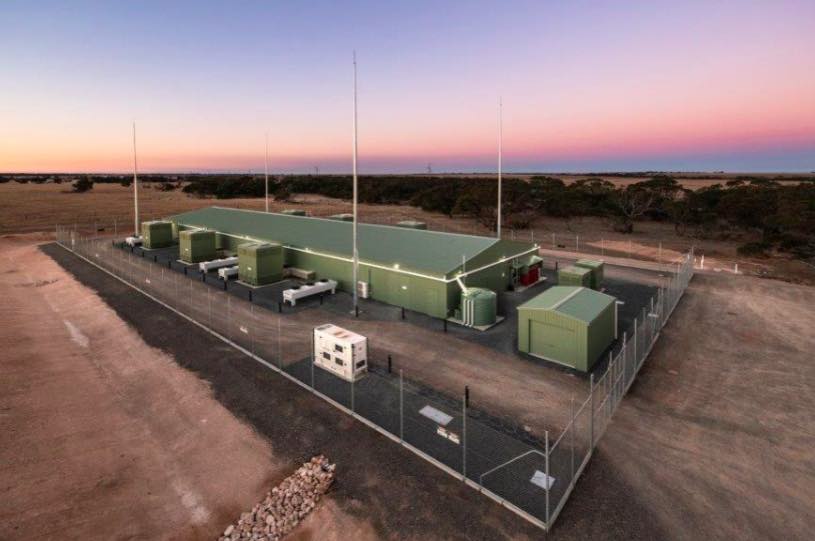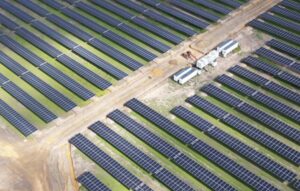AGL has pointed to grid-scale batteries as the likely game-changer in Australia’s electricity markets, as it prepares for a major shift in its own consumer base towards household batteries and electric vehicles.
In a presentation to the Macquarie Australia conference on Tuesday, AGL also warns that short-run marginal costs for existing coal and gas plants are likely to rise, as legacy supply contracts end – a development that will further underpin the long-term shift to renewables.
“Grid-scale batteries, although expensive now, have the potential to be the game changer once costs decrease,” CEO Brett Redman says in his presentation.
“The bow-wave for change in the scenario for renewables will be falling battery costs. Having commissioned the Dalrymple battery in South Australia in January, we’re looking for more opportunities in this space.”
Australia already has four large-scale battery storage installations in its main National Electricity Market – the Tesla big battery in South Australia, and at Dalrymple, Gannawarra and Ballarat – and many more in off-grid locations including the Pilbara and Alice Springs.
More are on their way. Three are under construction at the Lake Bonney wind farm and the Lincoln Gap wind farm in South Australia, and the Kennedy wind-solar-battery project in Queensland; and more are planned, depending on the outlook for policy and markets.
AGL is also looking at two pumped hydro storage facilities – one in NSW and one in South Australia – and has identified possible battery storage projects to help replace Liddell and also next to the new Cooper’s Gap wind farm in Queensland.
Redman noted that the pace and success of the clean energy transition is still dependent on government policy.
“Government policy should facilitate private sector investment, not hinder it and should be focussed on encouraging clear market signals for investment,” he noted, expressing his support for the National Energy Guarantee.
AGL’s other big focus is on meeting its own customer expectations and the shift to household batteries and electric vehicles. A couple of slides highlighted the huge potential in batteries, particularly with a host of different government schemes, and AGL intends to roll out its own offering by July 1.
“To date nearly 700 of our customers have registered their interest in this rollout,” Redman said. “Our offering will be about building capability and ramping up as government schemes do, expanding on what we’ve learnt through our Adelaide virtual power plant, which is still the largest operating retailer-led project of its kind in Australia.”
Redman put the current total market opportunity based on Victoria and South Australia’s committed schemes as around 50,000 batteries, or up to $700 million. This did not include Labor’s proposed support scheme designed to reach one million household battery installations by 2025.
He also spoke about electric vehicles, which he said had the potential to change the dynamics of the electricity market beyond 2025 as it would be be the single greatest source of increased electricity consumption.
 “This slide presents a simple scenario comparing the potential increased electricity usage and cost differences of an average Victorian household with an electric vehicle versus one with a vehicle powered by fossil fuel, in this case petrol,” he said.
“This slide presents a simple scenario comparing the potential increased electricity usage and cost differences of an average Victorian household with an electric vehicle versus one with a vehicle powered by fossil fuel, in this case petrol,” he said.
“The scenario assumes 1.8 vehicles per household as per the ABS, which would result in an increase in electricity consumption of roughly 4 megawatt hours per annum. This equates to an additional $1,300 to the household’s electricity bill per annum.
“Compare this to the average annual petrol cost for a household with the same number of petrol vehicles of $3,300 and the customer with an electric vehicle has a potential annual saving of $2,000.”
He also said there was a further benefit from reduced emissions (he put it at 40 per cent based around the average emissions from the grid).
“Based on an average Victorian household’s demand of around 6 megawatt hours per annum and using this scenario of 4 megawatts per annum added for electric vehicles this represents a potential 66 per cent increase in electricity demand per household.
“At the moment there are several challenges facing the electric vehicle industry, including supply side constraint in the Australian market and a lack of infrastructure. Electric vehicle market growth looks probable – although we are also excited about the potential for growth for hydrogen vehicles.”











